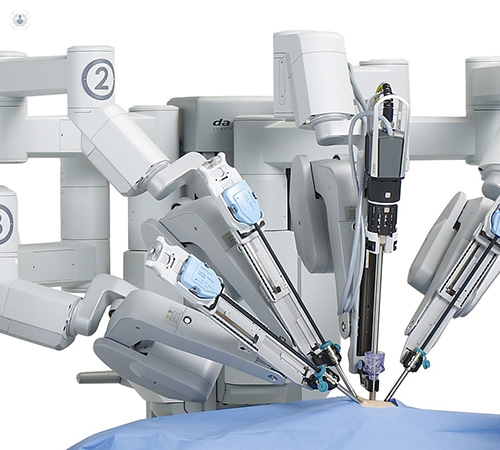What you should know about MAKO robotic-assisted surgery
Autore:MAKO robotic total hip and knee replacement is revolutionising the field of orthopaedic surgery, offering patients suffering from severe joint pain a highly precise and effective solution. This advanced technology, developed by Stryker, enhances the accuracy of joint replacement surgeries, leading to improved outcomes and faster recoveries for patients.
Here to explain a bit more about this new, highly innovative surgical technique is renowned consultant robotic hip and knee SMART surgeon, Mr Nadim Aslam.

What is MAKO robotic-assisted surgery?
MAKO robotic-assisted surgery involves the use of a robotic arm controlled by the surgeon to perform hip or knee replacements. The process begins with detailed preoperative planning, utilising CT scans to create a 3D model of the patient’s joint.
This model allows the surgeon to analyse the joint's anatomy meticulously and plan the surgery with unprecedented precision. The personalised surgical plan includes determining the optimal size, placement, and alignment of the implant.
How does it work?
During the procedure, the surgeon guides the MAKO robotic arm based on the preoperative plan. The robotic system provides real-time feedback and visual cues, ensuring that the surgeon can make highly accurate bone cuts and place the implant with exact precision.
The system’s haptic technology offers tactile resistance, preventing the surgeon from moving outside the predefined boundaries, which enhances the safety and accuracy of the procedure.
What are the benefits of MAKO robotic-assisted surgery?
One of the main benefits of MAKO robotic-assisted surgery is the improved alignment and placement of the implant. Proper alignment is crucial for the longevity and function of the replacement joint.
Patients should be aware that misalignment can lead to uneven wear, instability, and increased risk of complications. The precision offered by MAKO technology significantly reduces these risks, ensuring better long-term outcomes for patients.
Patients undergoing MAKO robotic-assisted hip or knee replacement often experience several advantages over traditional surgery. These include reduced pain and discomfort postoperatively, shorter hospital stays, quicker recovery times, and enhanced joint function. The minimally invasive nature of the procedure, combined with the accurate placement of the implant, contributes to these positive outcomes.
What is recovery like following MAKO robotic-assisted surgery?
Post-surgery, patients typically follow a tailored rehabilitation program to regain strength and mobility in the replaced joint. The precise placement of the implant allows for a more natural joint movement, facilitating a smoother and faster recovery process. Physical therapy plays a crucial role in this recovery, helping patients return to their daily activities with improved joint function and reduced pain.
To book a consultation today with Mr Nadim Aslam, just visit his Top Doctors profile.


